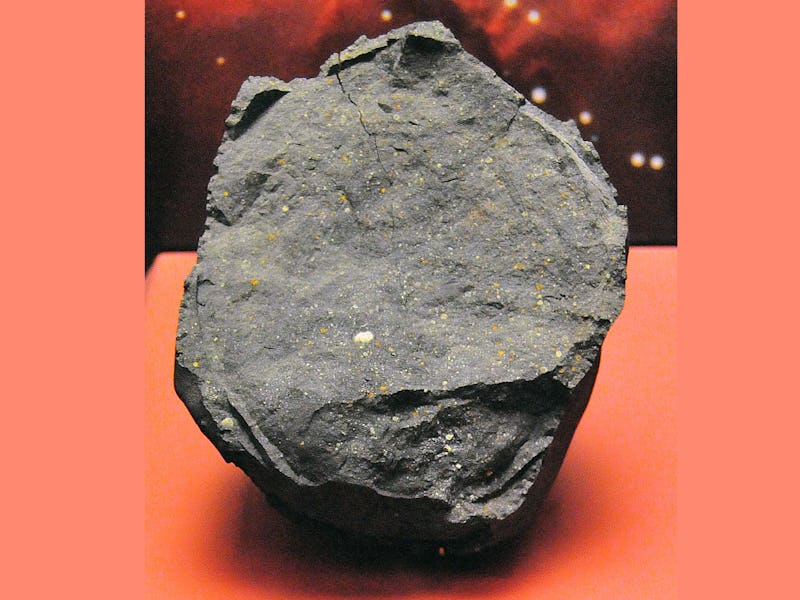Stardust embedded in ancient meteorite tells the origin story of the Sun
These stars were the building blocks of our Solar System.

On Sunday morning, September 28, 1969, an ancient visitor came crashing down on Earth.
A 4.6 billion-year-old meteorite landed in a small farming town north of Melbourne, Australia, and inside, it contained ancient secrets of the universe. More than 50 years later, the solid slab of cosmic material keeps on giving.
A team of researchers analyzed grains of ancient stardust found in the rock — dubbed the Murchison meteorite — linking them to ancient carbon stars that formed far before the Solar System but are considered the building blocks of stars like our Sun.
The researchers detail their findings in a study published in The Astrophysical Journal Letters.
Here’s the background — Nan Liu, research assistant professor of physics in Arts & Sciences at Washington University in St. Louis, and lead author of the study, explains how ancient stardust can get us familiar with our own star system.
“Our Solar System was made from this stardust and the gas expelled from their parent stars,” Liu tells Inverse. “So by studying these types of grains, we know what type of stars contributed material to our Solar System ... and these grains help us understand whether our Solar System is unique or common in the whole galaxy.”
The grains from ancient stars are often found in meteorites that end up on Earth.
What’s new — Embedded deep within samples from the Murchison meteorite are grains of stardust from carbon-rich stars that are over 4.6 billion years old. The grains formed in the cooling winds swept off the surface of low-mass, carbon-rich stars near the end of their lives.
“For stars that do not experience explosions, low-mass stars, they experience strong mass loss near the end of their lives from the surface due to stellar winds, and the lost stellar gas gradually cools for dust grains to condense,” Liu says. “For stars that explode at the end of their lives in supernovae, first you have a supernova remnant consisting of hot ionized gas, and then the remnant slowly cools down to form dust grains.”
The grains found in the meteorite came from ancient stars, ones that are up to three times more massive than the Sun.
Our Sun primarily consists of hydrogen and helium, but these larger stars have higher temperatures, burning helium to make carbon. That is why these pre-solar dust grains have higher carbon concentrations than would be found in a star like the Sun.
The data from the new study will help scientists create better models of ancient stars and how they evolved over time to become stars like our Sun.
Abstract: We report NanoSIMS Si and Mg–Al isotopic data (and C, N, and Ti isotopic data, when available) for 85 submicron- to micron-sized presolar SiC grains from the CM2 Murchison meteorite, including 60 mainstream (MS), 8 AB1, 8 X, 7 AB2, and 2 Y grains. The MS and Y grain data demonstrate that (1) C and N contamination mainly appears as surface contamination, and sufficient presputtering is needed to expose a clean grain surface for obtaining intrinsic C and N signals, and (2) Mg and Al contamination appears as adjacent grains and rims, and high-resolution imaging and the choice of small regions of interest during data reduction together are effective in suppressing the contamination. Our results strongly indicate that previous studies of presolar SiC grains could have sampled differing degrees of contamination for C, N, Mg, and Al. Compared to the literature data, our new MS and Y grains are in better agreement with carbon star observations for both the C and N isotopic ratios. By comparing our new, tighter distributions of 12C/13C, 14N/15N, and initial 26Al/27Al ratios for MS and Y grains with FRUITY low-mass asymptotic giant branch (AGB) stellar models, we provide more stringent constraints on the occurrence of cool bottom processing and the production of 26Al in N-type carbon stars, which are classical AGB stars.
This article was originally published on